Black History: The Visions of Gordon Parks
Media and film literacy expert Frank Baker offers a fresh idea for Black History Month – exploring the life, career and creativity of African American photographer, writer and director Gordon Parks.
Looking at the Past Through the Eyes and
Images of a Remarkable American Storyteller

My mouth was agape as I watched the documentary “Half Past Autumn: The Life and Works on Gordon Parks” (YouTube). How could one man, I asked myself, have accomplished so much in one lifetime.
In 90 minutes I learned that the late Gordon Parks had been a poet, photographer, filmmaker, author, music composer and more.
I was curious about Parks after having experienced a new exhibit of never-before-seen images from the 1950s and 1960s at Atlanta’s High Museum of Art. (Images from the exhibit as well as other education resources can be found here).
At Segregated Drinking Fountain, Mobile, Alabama, 1956.
(Promised gift of The Gordon Parks Foundation – source)
Parks said he used his “camera as a weapon”- to reveal a life white Americans rarely saw or understood. His access to important places and events allowed him to document many people, and he had an outlet for his photography and more.
When I am introduced to an important person in American History, I am anxious to share my enthusiasm for them with teachers and students. Not only are his images available for study, so are his words. He was a prolific writer—and both images and words should be required viewing and reading.
Airline Terminal, Atlanta, Georgia, 1956
(Collection of The Gordon Parks Foundation – source)
It’s unfortunate that Parks’ works are not included in many of today’s American History and Art History textbooks, because they should be. Here is why.
► During the Depression, he was hired by the Franklin Roosevelt administration’s Farm Services Administration to be one of those photographers who documented living conditions of people (in this case, in the South) so that those images could awaken American’s consciousness and get the New Deal passed.
“American Gothic” (below) is considered to be one of Parks’s signature images from that period of his life’s work. “Ella Watson was a black charwoman who mopped floors in the FSA building. Parks asked her about her life, which she divulged as having been full of misery, bigotry and despair. Parks’s simple question, ‘would you let me photograph you?’ and Ella’s affirmative response, led to the photographer’s most recognizable image of all time” (source). His image appeared on the front page of The Washington Post and became symbolic of the treatment of African-Americans at that time in history.
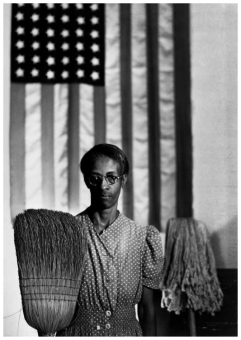
(Source)
► He was the first black photographer hired by Vogue, the fashion magazine.
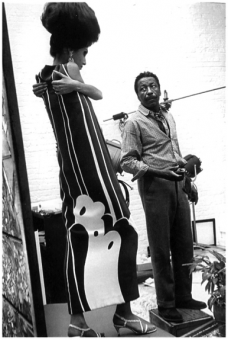
Photo by Eve Arnold, New York City, 1964 (Source)
► He was the first black photographer to be hired by LIFE, the popular culture/current events magazine, covering the Civil Rights movement and the segregation story, among many others.
► He was the first black director hired by a major Hollywood film studio (Paramount) and the first film he produced was his own life story, The Learning Tree, based on the book of the same name. He also wrote and directed Shaft starring Richard Roundtree.
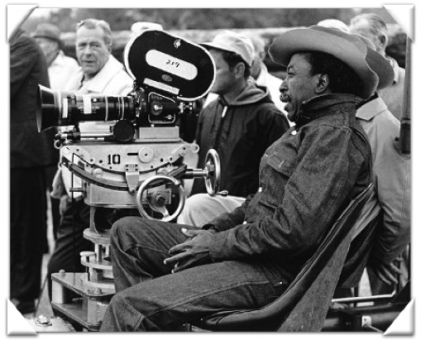
The Gordon Parks Collection (Source)
► He was a prolific writer, authoring almost 20 books in his lifetime, including “A Choice of Weapons.”
A 20th Century Renaissance Man
Parks had the ability to get his subjects to feel comfortable with him and his camera, whether the subject was street gangs of Harlem or celebrities of the time.
His story is a rags to riches one, but along with success comes personal problems along the way. In books written about him and in his own accounts, he is frank about his shortcomings. But in the end he is appreciative of the opportunity he had to tell a story. And tell stories he did….lots of them.
Here are some resources about Parks that might be appropriate for your class or school library:
• Gordon Parks: How the Photographer Captured Black & White America (Albert Whitman & Company Publishers) 2014
• The Photographs of Gordon Parks: The Library of Congress (GILES Publishing) 2011
• Gordon Parks VISIONS: The Images, Words & Music of Gordon Parks (DVD) 2009
• Gordon Parks, No Excuses (Pelican Publishing) 2006
• Children of the Great Depression (HMH Books for Young Readers; Reprint edition) 2010
• Extraordinary African-Americans: From Colonial To Contemporary Times (Children’s Press) 2002
• In addition, Photo District News (PDN) “Legends Online” includes Parks’s biography; a gallery of images and video clips of the photographer talking about many of his images.
• PBS has a short video segment on Parks from its Independent Lens documentary “Through A Lens Darkly.”
Frank W. Baker is a media literacy education consultant and the author of three books, including Media Literacy in the K-12 Classroom (ISTE, 2012). He contributed two chapters to Mastering Media Literacy (Solution Tree, 2014). He is a recipient of the National Telemedia Council‘s annual Jessie McCanse Award given for individual contributions to the field of media literacy over at least 10 years. Follow him on Twitter @fbaker and visit his resource-rich website Media Literacy Clearinghouse.

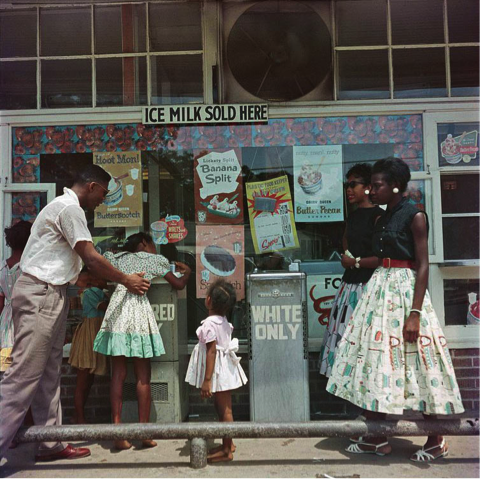
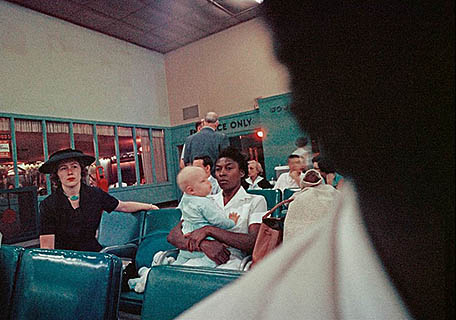
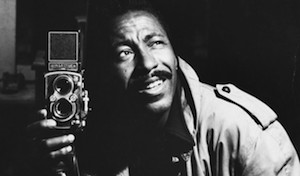





























The New York Times used the Airline Terminal photo recently in its regular column “What’s Going On In This Picture?” in which students are invited to speculate/comment on an image. Check it out on the NYT Learning Network for educators.
Mark Your Calendar: PBS presents: Through A Lens Darkly: Black Photographers & The Emergence of a People, February 16, 10pm ET (Check local listings)
http://www.pbs.org/independentlens/through-a-lens-darkly/
http://video.pbs.org/video/2365401193/
Great website with lesson plans correlated to Gordon Parks’ images:
http://www.yale.edu/ynhti/curriculum/units/2006/1/06.01.04.x.html